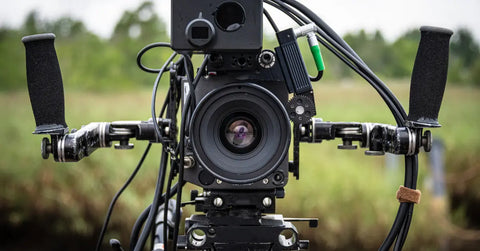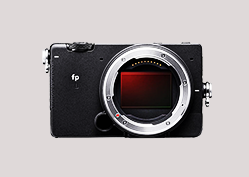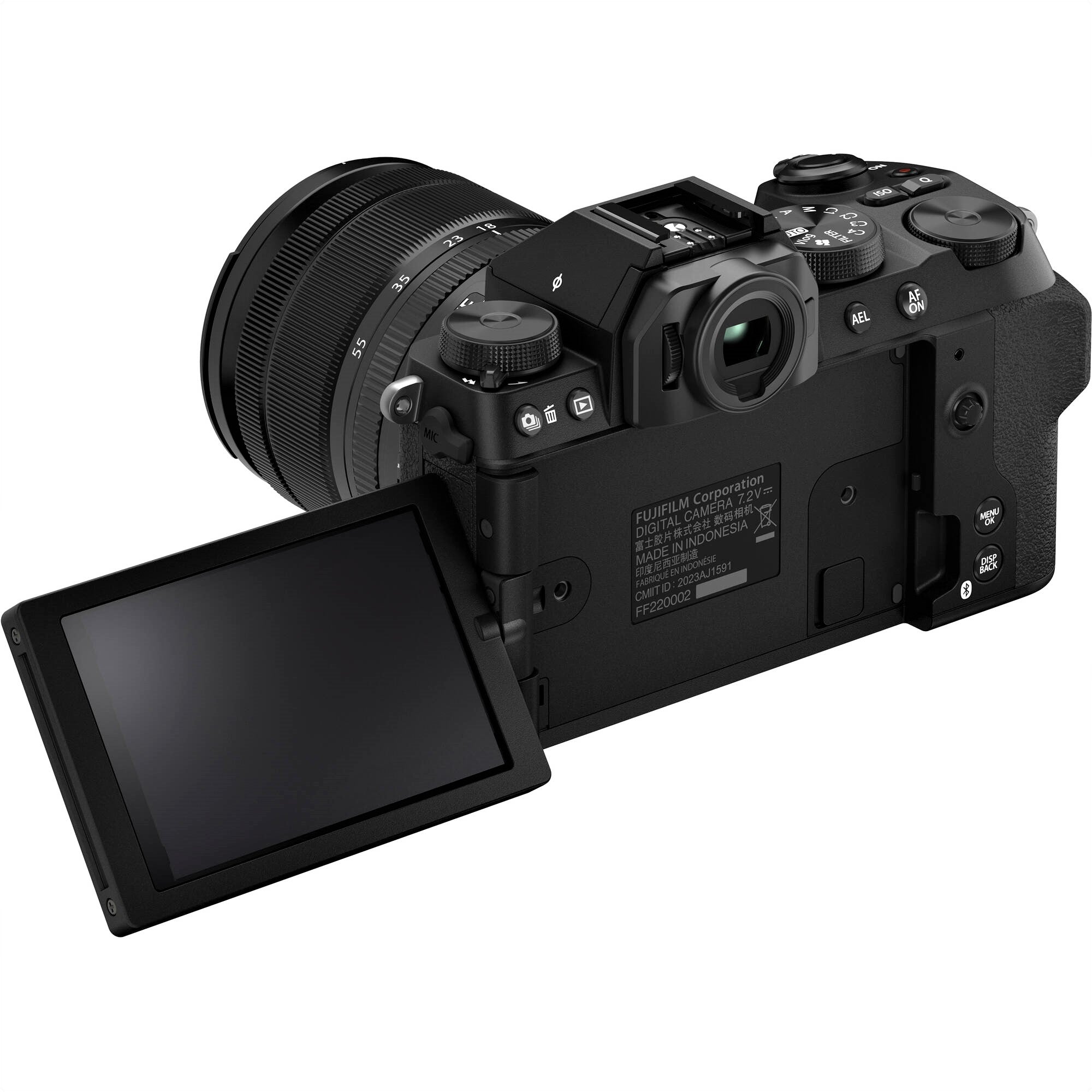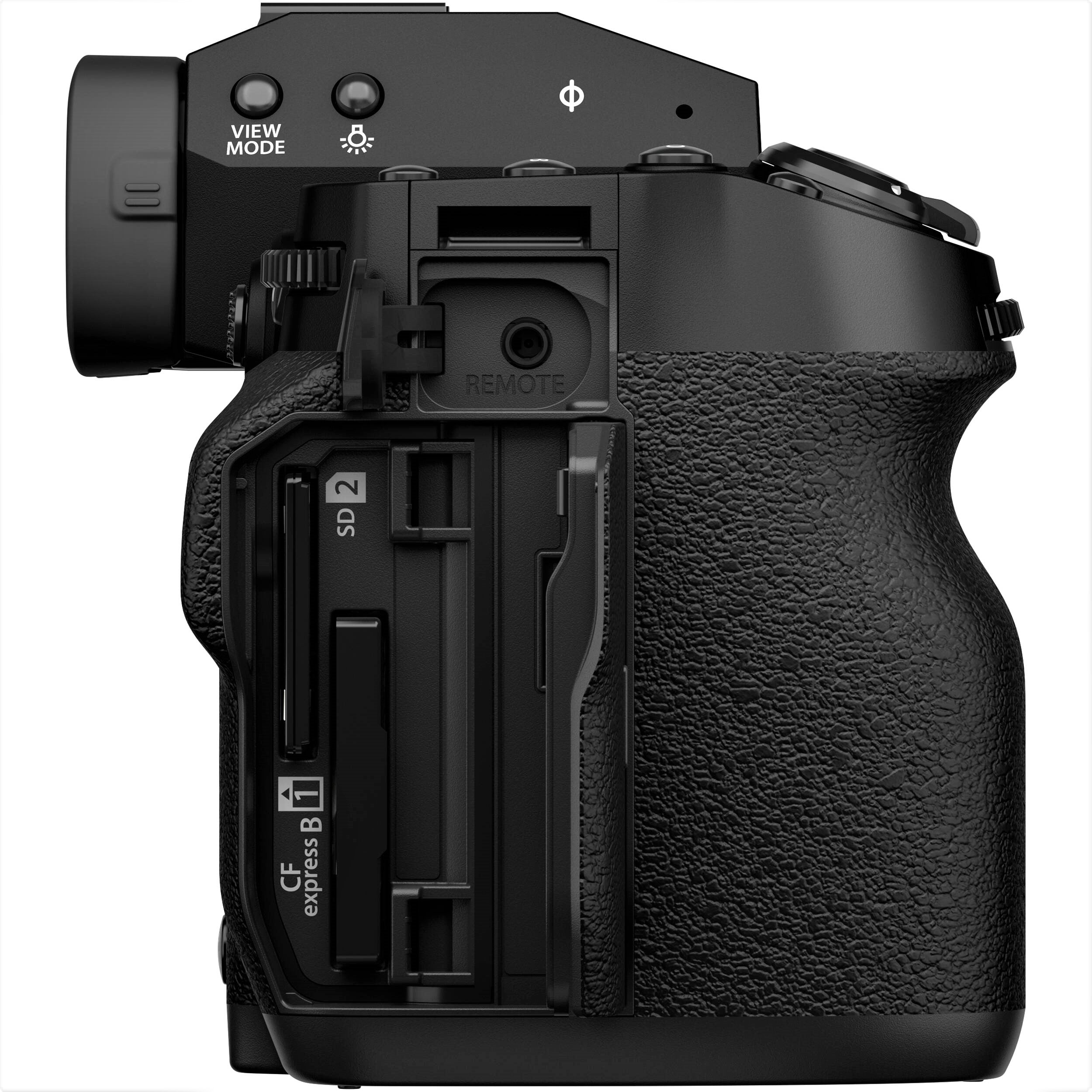Ever wondered about the allure of prime lenses that many photographers rave about?
Prime lenses provide a fixed focal length. This design forgoes zoom features, which might seem limiting but actually improves image quality. The direct outcome of using a prime lens mirrors your vision, limited only by its focal length. This constraint makes you physically engage with your subject, moving closer or further, sparking creativity.
Such engagement fosters a deeper exploration of perspectives, often resulting in more intriguing and well-composed images.
For both beginners and experts, getting the hang of a prime lens could revolutionize your photography. These lenses require a deliberate approach to framing, typically yielding sharper, clearer photos that make subjects pop with distinct clarity and artistic flair.
They are praised for capturing fine details and producing beautiful bokeh, perfect for portraits, street scenes, or any setting where your subject needs to stand out against a blurred backdrop.
Interested in how these trusted tools can improve your photography? Let’s discover how prime lenses help you capture the essence of each moment, one carefully taken image at a time.
What is a Prime Lens?

Prime lenses, defined by their fixed focal length, lack the zoom capabilities of their counterparts. This might seem limiting, but it offers a simplicity and consistency akin to a favorite pair of well-fitting shoes, appropriate for any occasion.
Consider the 50mm, 85mm, or 35mm lenses. Each provides a distinct perspective, shaping the aesthetic and emotional tone of your images. The "nifty fifty," for instance, mirrors the human eye's view, making it highly adaptable for various photography styles, from portraits to landscapes.
The constraint of a single focal length might actually boost your creativity. It forces you to move physically to frame your shots, encouraging a more intentional composition style. This might lead you to discover new angles and perspectives overlooked with a zoom lens.
Prime lenses also boast wider apertures, like f/1.4 or f/1.8, which gather more light and are perfect for dim settings. These apertures facilitate a shallow depth of field, allowing for a blurred background or bokeh, which highlights your main subject and injects a professional flair into your photos.
Lighter and more compact than zooms, prime lenses appeal to those who prefer not to be weighed down by heavy gear. Their streamlined design not only lightens the load but also sharpens image quality by minimizing optical distortions. This mix of superior clarity, low-light capability, and ease of transport makes primes popular among both hobbyists and seasoned pros.
Adopting a prime lens invites a shift in your photography approach—one that values movement, exploration, and deeper engagement with your subject. This can profoundly enrich both your experience behind the lens and the resulting images.
Optical Quality and Aperture

Prime lenses stand out for their superior image quality over zoom lenses, thanks to their focused engineering. These lenses stick to one focal length, unlike zoom lenses that juggle multiple lengths and moving parts.
This means fewer glass elements and less complexity inside the prime lens, allowing manufacturers to perfect the quality of each component. This attention to detail reduces unwanted quirks and distortions in photos, enhancing their clarity.
The design of prime lenses also permits larger maximum apertures, like f/1.4 or f/1.8, making them excellent for low-light situations. More light hits the camera sensor, enabling faster shutter speeds to minimize blur from any movement.
Additionally, the wide apertures of prime lenses create a shallow depth of field, which blurs the background into a soft, appealing haze, known as bokeh. This effect is especially valued in portrait photography, focusing attention crisply on the subject against a dreamily blurred backdrop, adding a professional, ethereal touch to the images.
Using a prime lens not only elevates image quality and performance in dim lighting but also enhances creative expression, allowing photographers to produce distinctly polished and visually captivating photographs.
Why Choose A Prime Lens?
1. Sharper Image Quality
Prime lenses are a favorite in photography. Why? Because they deliver incredibly sharp images. Both beginners and pros love that. Unlike zoom lenses, which use a lot of moving glass pieces, prime lenses stick to a simpler build. Fewer parts. Less complexity. Better results.
Here’s the thing: light travels more directly through a prime lens. There’s less glass for it to bounce off or scatter through. That means fewer problems—like weird color streaks (chromatic aberration), ghosting, or flares. The image comes out cleaner. Sharper. More vibrant. More alive.
Another big win? The aperture. Prime lenses often go wide—really wide—like f/1.4 or f/2. That lets in a ton of light. Shooting at night? Indoors? No problem. You don’t need to crank up your ISO or slow down your shutter speed. You just let the lens do its thing.
And then there's bokeh—that soft, blurry background that makes your subject pop. A wide aperture helps with that too. You get depth. Emotion. Mood.
Photographers who shoot portraits, landscapes, or street scenes often swear by primes. They push you to move. To think. To get close. That physical effort changes how you shoot. You’re not just clicking. You’re connecting. Framing. Creating.
So yes, prime lenses are sharp. But they’re more than that. They invite a different mindset. Less zooming. More intention. They help you slow down, focus, and see. And that—more than any spec—can elevate your work from good to great.
2. Wider Apertures
A wide aperture—like f/1.2, f/1.4, or f/1.8—can change the game. It's not just a number. It’s a creative tool.
Photographers love prime lenses with wide apertures because they let in more light. This means better shots in dark places. No flash. No harsh lighting. Just the real mood of the scene.
Imagine this: an event is happening in a dimly lit room. A photographer pulls out a lens set to f/1.4. Snap. Sharp image. No flash needed. The shadows stay soft. The moment feels real.
But there's more. Wide apertures do something special—they blur the background. Not just a little. A lot. This blur is called bokeh. It’s smooth. Dreamy. It pulls your eyes to the subject.
Think portraits. Think close-ups. A face in sharp focus. The background? Melted into a creamy blur. Beautiful.
The way that blur looks? It depends on the lens. Some have round blades that make bokeh soft and circular. Others? More edges. More shape. It’s all a creative choice.
There’s also a technical bonus. A wide aperture lets you use faster shutter speeds and lower ISO. That’s key when shooting fast action—like wildlife or dance. Even in low light, you can freeze the motion. No blur. Just crisp detail.
In the end, it’s about more than specs. A wide aperture gives photographers control. Depth. Emotion. Light. All in their hands. Whether it’s a candlelit dinner or a pet’s whiskers, this kind of lens helps tell better stories.
3. Improved Low-Light Performance
Taking great photos in low light is tough. But that’s where prime lenses shine. They aren’t just another piece of gear — they’re a game-changer. Why? Because they let in a lot more light.
Prime lenses usually have wide apertures. Think f/1.4, f/1.8, or f/2.0. That means more light reaches your camera’s sensor. A lot more than with zoom lenses. In darker settings, that’s huge. It helps you avoid cranking up the ISO too high — which, let’s be honest, can ruin a shot with all that ugly grain.
But it’s not just about letting in more light. There’s more.
When you use a wide aperture, you can shoot with faster shutter speeds. That helps cut down on blur. No tripod? No problem. You can still get sharp, clean images — even when your hands aren’t perfectly steady.
And let’s talk about style. Prime lenses aren’t just technical tools — they make your photos look better. With that shallow depth of field, your subject pops. The background melts into a soft blur. That bokeh? Smooth, dreamy, professional.
So, why pick a prime lens for low light?
Because it shows you care about your craft. It’s not just about snapping a picture. It’s about capturing a feeling. A moment. A mood. All with clarity and creativity.
If you want to level up your low-light photography, grab a prime lens. It's a smart move. Simple as that.
4. Compact and Lightweight
Prime lenses don’t zoom. They have one fixed focal length. That’s it. But that simple design? It’s a game changer.
Why? They're small. They're light. That matters—a lot—especially if you're always on the move. Travel photographers, street shooters, even casual hobbyists all know the value of keeping gear light. A bulky bag slows you down. A prime lens doesn’t.
Zoom lenses have lots of moving parts. Prime lenses don’t. Fewer parts mean less weight. Less weight means easier movement. You can shoot longer. Walk farther. Stay nimble. And when you're trying to capture the perfect shot in a bustling market or on a narrow street? That mobility is gold.
But it’s not just the size. Prime lenses push you. Since you can’t zoom, you have to move. Step closer. Back up. Crouch. Find the angle. You’re not relying on a twist of the wrist—you’re engaging with your subject. That makes you think more. And thinking more often leads to better photos.
There’s another bonus: image quality. With fewer glass elements inside, prime lenses are sharp. Really sharp. Less distortion. Cleaner edges. Better detail. Whether it’s a textured brick wall or a smile lit just right, you’ll see the difference.
In the end, a prime lens isn’t just a piece of gear. It’s a tool that shapes how you shoot. It strips away the extras and leaves you with what matters: clarity, creativity, and connection. If you want to shoot with purpose—and get crystal-clear results—prime is the way to go.
5. Forces Creative Composition
Using a fixed focal length in photography might seem limiting at first. But it’s not. In fact, it can spark real creativity.
With a prime lens, there’s no zoom. You get one field of view—unchanging. That means you move. You walk forward. You step back. You crouch, climb, shift. All to frame the shot. This kind of movement makes you notice things. Odd angles. Hidden corners. New perspectives.
Being stuck with one focal length forces a shift in mindset. You can’t just stand there and twist a ring. You have to think. How do I make this scene work? What angle shows it best? That physical act—moving around—builds a stronger connection to the subject. Suddenly, you’re not just snapping photos. You’re building them.
Take a 50mm lens. Classic. Simple. Say you’re shooting a portrait. You need to move in close. Really close. That closeness changes things. Expressions feel more real. Backgrounds fall away. The frame tightens. You control more. You see more.
And here’s the secret: this constraint sharpens your eye. You start to notice the layout of a scene—how things line up, how light moves, how shadows stretch. You think about shape. Color. Balance. You use the rule of thirds. Leading lines. Framing. All the basics—but now they matter more.
Many pros actually prefer prime lenses. Not just for the look, but for the discipline. With one lens, every photo becomes a choice. A deliberate act. Over time, that leads to a personal style. Unique. Recognizable.
So, don’t fear the fixed focal length. Embrace it. Let it slow you down. Make you look harder. Think deeper. Your images will show it—shots that feel alive, intentional, emotional.
Beginner or veteran, this one-lens approach can shape your whole journey. And that’s the point. Limits can free you.
6. Better Value (Cost-to-Quality Ratio)
When it comes to photography, people often ask: should I get a prime lens or a zoom lens? It's a common debate. At the center of it all is cost and image quality. Prime lenses, which don’t zoom, are known for being sharp and clean. They usually beat zoom lenses when comparing similar specs. Let’s break down why primes are such a great deal.
Prime lenses are simple. They have one focal length. That’s it. No zooming in or out. Because of this, they use fewer glass parts. Less glass means less distortion. Less weight, too. That’s a big plus. Street photographers, travelers, or anyone on the go? They love this. Lighter gear means you can move faster and shoot longer without getting tired.
Now, let’s talk money. A prime lens with a wide aperture—say f/1.8 or even f/1.4—is often cheaper to make than a zoom with the same brightness. That matters. If you're starting out or working on a tight budget, primes are a smart buy. They’re also a smart move for pros who want quality without the heavy price tag.
But primes aren’t just about sharpness or savings. They change how you shoot. Since you can’t zoom, you have to move. You step forward. You step back. You think more. You look harder. You engage with the scene. It makes you more present. More creative. That’s a hidden bonus not everyone expects.
Another win? Light. Prime lenses often let in more of it. This helps a ton in dim settings. You won’t need to push your ISO too high or rely on a flash. And then there’s bokeh—that soft, dreamy blur behind your subject. Prime lenses do that really well. Portraits, detail shots, moody scenes? Primes shine here.
So, sure, zoom lenses are flexible. One lens, many options. But prime lenses? They make you better. They push you. They give you quality, for less. They help you grow.
If you care about clean images, saving money, and becoming a stronger photographer, a prime lens isn’t just a tool. It’s your teacher.
When to Choose a Prime Lens:
- Portraits That Pop: Want those dreamy, blurred backgrounds that make your subject stand out? That’s where prime lenses rule. The 50mm and 85mm are favorites for portraits. Why? They’re sharp. They flatter the face. They create that creamy background (bokeh) that everyone loves. And when your subject is clear and the background melts away? That’s magic. Short story: They pull focus exactly where you want it. And they do it beautifully.
- Street Photography with Soul: Street photography is fast, raw, and real. You need gear that won’t slow you down. Prime lenses, especially 35mm or 50mm, are small and light. You can move through the crowd unnoticed. Snap. Move. Repeat. Even better? These lenses match how we naturally see. So your photos feel real—like moments, not just pictures. And with a wide aperture, you’re ready for action in low light or sudden movement. That’s key in the chaos of the street.
- Low Light? No Problem: Prime lenses love the dark. Thanks to their wide apertures (like f/1.4 or f/2), they let in more light. That means no flash, no fuss. Just natural vibes. You can shoot during golden hour, blue hour, or even deep into the night. Indoors? Same deal. Low light doesn’t kill the mood. It enhances it. And primes help you capture it without grain or blur.
- Cinematic Feels and Creative Play: Want that dramatic, movie-like look? Go prime. Wide open, these lenses create shallow depth of field. Your subject? Razor sharp. The background? Dreamy blur. It’s more than pretty. It’s storytelling. The eyes go where you want them. The emotions hit harder. It’s visual poetry. And it’s all possible with a simple prime.
- Lightweight, But Loaded with Quality: Here’s a bonus: primes are compact. Travel photographers love them. So do wedding shooters, hikers, and anyone who carries a camera all day. Less weight. Smaller size. No sacrifice in image quality. In fact, primes often outperform zooms when it comes to clarity and color. They're simple, but powerful.
Use Cases and Benefits

Using prime lenses can revolutionize your approach to photography by fundamentally altering how you frame and capture images. Unlike zoom lenses, prime lenses do not offer the flexibility to adjust the focal length from the camera; instead, they require you to physically move closer or further from the subject to compose your shot.
This limitation encourages a more active engagement with the composition and perspective of your photographs.
The act of moving to find the perfect shot—often referred to as "zooming with your feet"—can significantly enhance your creativity. It forces you to explore different angles and perspectives, pushing you to discover novel and visually engaging ways to represent familiar scenes.
This process not only adds dynamism to your workflow but also deepens your understanding of spatial relationships within your frame, which is essential for mastering photographic composition.
Consider the popular 50mm prime lens, commonly known as the "nifty fifty." This lens is celebrated for its ability to closely replicate the human eye’s natural field of view, making it exceptionally intuitive for capturing portraits and everyday moments.
Its versatility lies in its simplicity; whether you're photographing a friend's spontaneous laughter or a serene street at dusk, the 50mm lens offers a direct and unaltered perspective, often resulting in strikingly authentic and compelling images.
On the other hand, the 24mm prime lens is a favorite among those who photograph expansive scenes. Ideal for capturing sweeping landscapes or detailed architectural structures, this lens provides a wide field of view without the distortion typically associated with ultra-wide lenses.
Its capacity to maintain straight lines makes it an excellent choice for architectural photography, where precision and angle are paramount.
Ultimately, opting for a prime lens encourages a more thoughtful and engaged form of photography. By limiting your ability to zoom mechanically, it compels you to interact more profoundly with your environment, to move and explore, and to see the world through a more deliberate and artistic lens.
This not only enhances the quality of your photographs but also enriches your experience as a photographer, making each shot not just an image but a moment of true visual discovery.
What is the difference between a prime lens and a normal lens?
A prime lens, or fixed focal length lens, offers a distinct focal length like 50mm or 85mm. This lacks the zooming versatility, yet yields sharp images with minimal distortion, thanks to superior optical quality. These lenses excel in low-light situations and allow for a shallow depth of field, making the subject pop against a blurred background.
Conversely, a normal lens replicates the human eye's view, typically around 50mm on full-frame cameras and 35mm on crop sensors. Though often confused, a normal lens can be prime or zoom, as long as it falls within this range. These are great for various photography styles, from portraits to everyday scenes.
Choosing between a prime and a normal lens hinges on your needs. Opt for a prime lens for precision and stunning bokeh, or a normal lens for compositional flexibility.
Understanding these differences not only aids in selecting the right lens but also enhances your photographic creativity, whether capturing landscapes or lively street scenes.
Prime Lenses vs. Zoom Lenses: According to professional photographers, prime lenses typically offer up to 10-15% better image sharpness and clarity compared to zoom lenses due to their simpler optical design and fewer moving parts.
This makes them ideal for achieving higher-quality images, especially in low-light conditions where maximum aperture is critical.
Here are some recommendations:
Sigma and Tamron are renowned for producing high-quality lenses, including some fantastic prime lenses that cater to various photographic needs and budgets. Here are some recommended prime lenses from both Sigma and Tamron, suitable for different types of photography:
Sigma Prime Lenses
- This lens is part of Sigma's esteemed Art line, known for its excellent optical quality and large f/1.4 aperture, making it perfect for low-light conditions and for achieving a shallow depth of field.
- Best For: It's ideal for street photography, environmental portraits, and landscape shots.
- Another gem from the Art series, this 50mm lens offers exceptional sharpness and bokeh, comparable to much more expensive lenses. Its robust build and optical performance make it a favorite among portrait and event photographers.
- Best For: Portraits, studio shoots, and everyday photography.
- Known for its beautiful bokeh and superb autofocus performance, this lens is a portrait photographer's dream. The focal length and aperture combination allow for exquisite detail and isolation of subjects from backgrounds.
- Best For: Portraiture and low-light photography.
- Wide-angle lens with a large aperture, great for astrophotography and landscape photography. It offers sharp images with minimal distortion.
- Best For: Landscape, architectural photography, and astrophotography.
Tamron Prime Lenses
- This lens is a standout in Tamron's lineup, offering professional-level optics, weather sealing, and exceptional image quality. The f/1.4 aperture ensures it performs well in various lighting conditions.
- Best For: General photography, landscapes, and street photography.
Tamron SP 85mm f/1.8 Di VC USD
- Unique for its inclusion of Vibration Compensation (VC), Tamron’s image stabilization technology, this 85mm lens allows for sharper images at slower shutter speeds and smoother handheld shooting in low light.
- Best For: Portraits and low-light photography where stabilization is key.
Tamron SP 45mm f/1.8 Di VC USD
- This is a versatile prime lens with built-in stabilization and a slightly wider-than-normal angle of view, making it an excellent choice for indoor and low-light photography.
- Best For: Everyday shooting, street photography, and environmental portraits.
These lenses from Sigma and Tamron provide a range of options for different photography styles and needs. Whether you're looking for a lens that excels in portrait, landscape, or general photography, both manufacturers offer high-quality primes that can enhance your photographic results.
Conclusion
To sum up, prime lenses offer exceptional image quality, impressive low light performance, and an opportunity to engage more deeply with your photography. They encourage photographers to think more about composition and perspective, leading to better-framed and more thoughtful photographs.
If you're looking to refine your photography skills or simply want to explore a new style, consider adding a prime lens to your arsenal. The simplicity and challenges of using a prime lens might just inspire your next great photo.
So why wait? Look into the world of prime lenses and see the difference for yourself!
Visit Nuzira and join our Discord channel to learn more about prime lenses!






